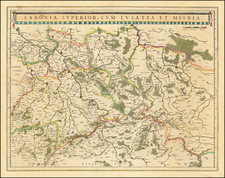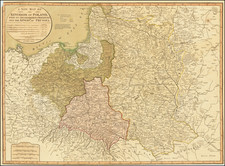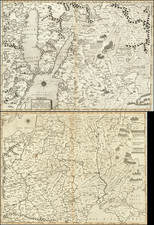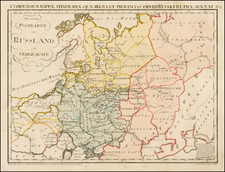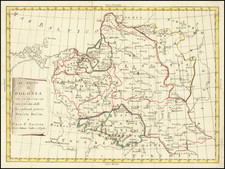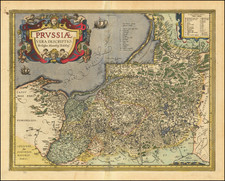Warsaw After the 1830 November Uprising
Interesting hand drawn map of Warsaw and environs on the Vistula River. The map would seem to illustrates Warsaw shortly after the 1830 November Uprising, which led to Russian tightening its grip on Poland and ending its autonomous rule.
The map is oriented with West at the top.
The map shows the "Cytadella," the Warsaw Citadel built by order of Russian Emperor Nicholas I after the suppression of the 1830 November Uprising in order to bolster Imperial Russian control of the city. The area around the Citadel, which had formerly been "New Town," no longer appears on the map. This corresponds with the events following the Uprising, which resulted in the creation of a Russian military administration in Warsaw. An estate of pretty manors on the north of New Town was eradicated and the Citadel was built.
The map also shows the "Belweder." The Belweder was built in 1660 and once belonged to Poland's last king, Stanisław August Poniatowski, who used it as a porcelain-manufacturing plant. From 1818 it was the residence of Russian Grand Duke Constantine, who fled from it at the beginning of the November 1830 Uprising.
As the map shows the area around the Citadel with no neighboring structures, the map was likely drawn sometime in the 1830s or early 1840s, before the arrival of the railroad. The road to Kaunas (Lithuania) is noted below the Vistula. The roads to other major towns, such as Cracow, are also shown, but apparently no railroad lines, the first of which, to Vienna, began in 1840 and after several failures, was completed in 1848. The general outlines of the map and its contents and treatment of Praga across the river correspond with other maps from this period, such as this SDUK map from 1831, immediately prior to the eradication of the New Town neighborhood: https://www.raremaps.com/gallery/detail/67291
1830 November Uprising
The November Uprising (1830–31), also known as the Polish–Russian War 1830–31 or the Cadet Revolution, was an armed rebellion in the heartland of partitioned Poland against the Russian Empire. The uprising began on November 29, 1830, in Warsaw, when the young Polish officers from the local Army of the Congress Poland's military academy revolted, led by lieutenant Piotr Wysocki.
Large segments of the peoples of Lithuania, Belarus, and the Right-bank Ukraine soon joined the uprising. Although the insurgents achieved local successes, the Imperial Russian Army under Ivan Paskevich eventually crushed the uprising. The Russian Emperor Nicholas I decreed that henceforth Russian-occupied Poland would lose its autonomy and become an integral part of the Russian Empire. Warsaw became little more than a military garrison, and its university was closed.









